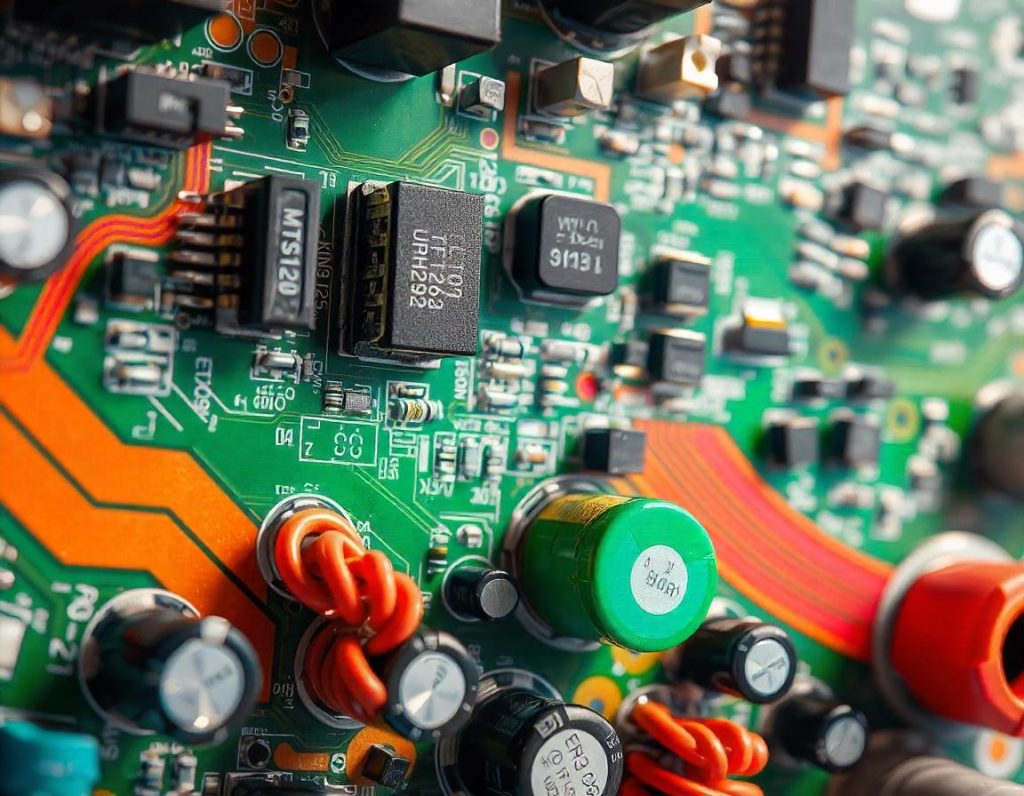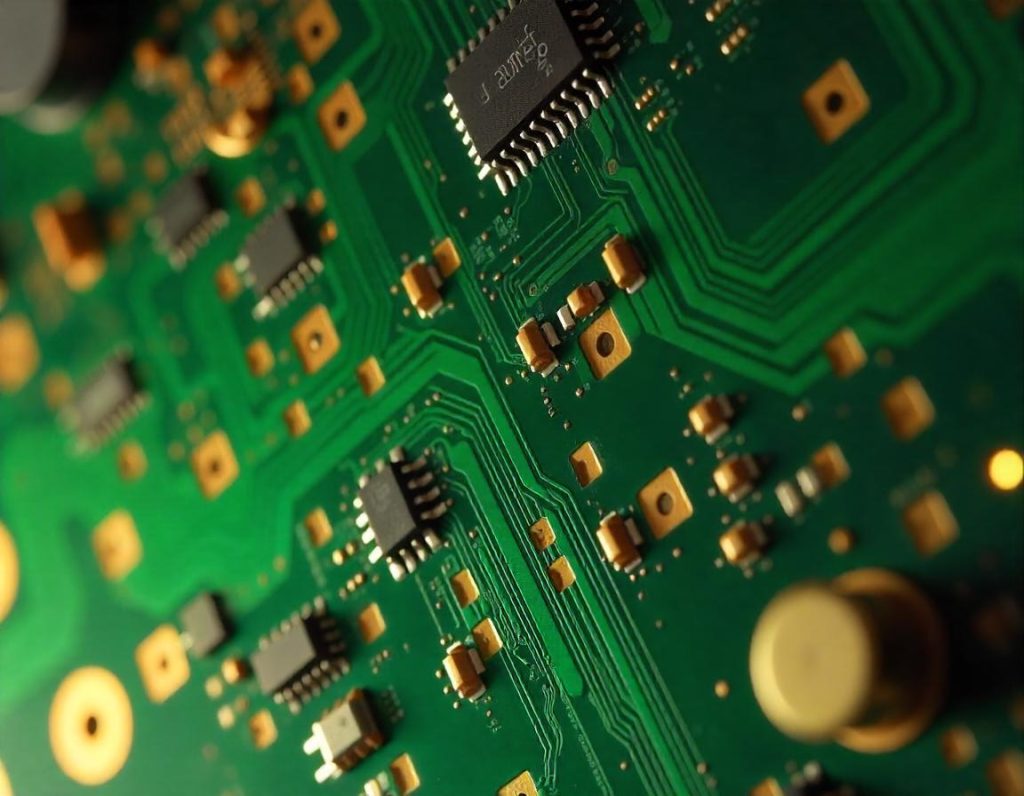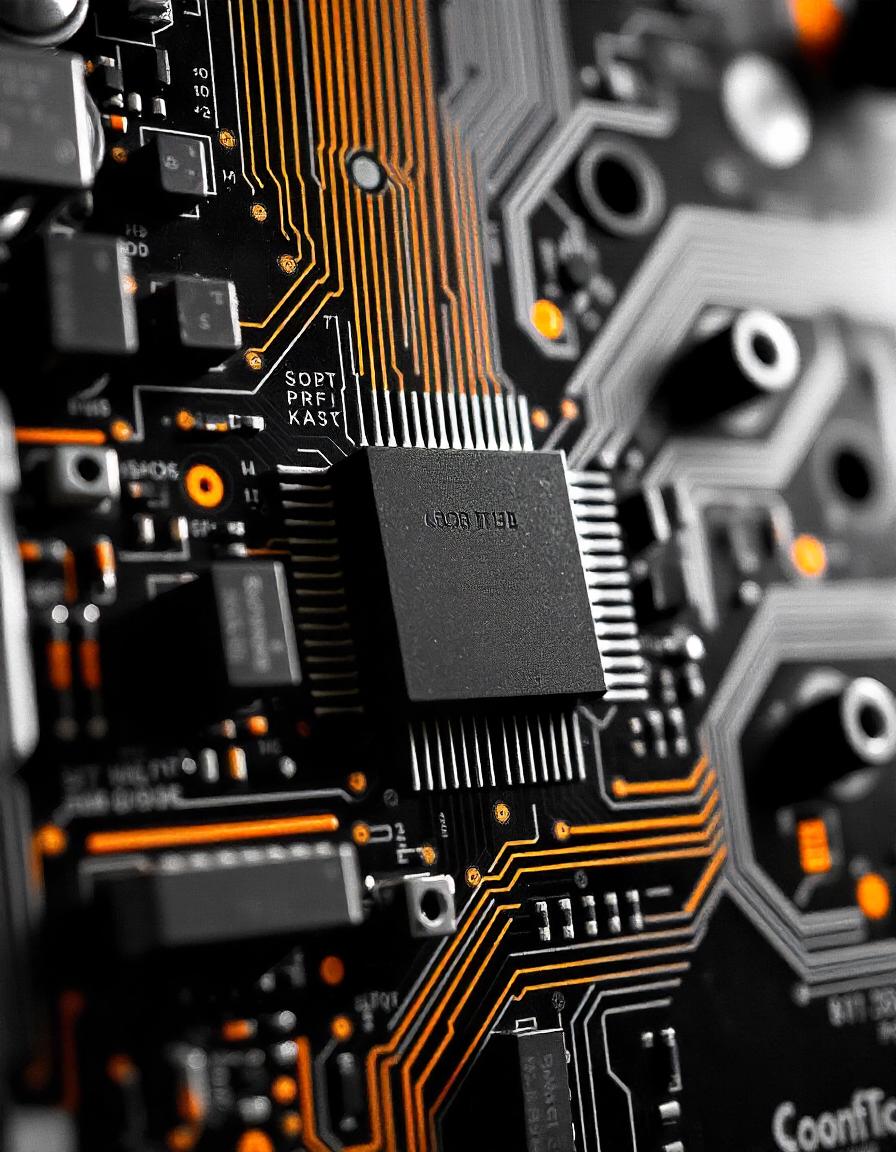Countersunk holes in PCBs are becoming an increasingly common feature in advanced electronic designs. These countersunk screws have a circular head with a flat top and a PZ recess which enables them to be screwed flush to the material they’re being used with.
These simple yet effective PCB design benefits help secure screws more efficiently, reducing the risk of damaging delicate components. These also offer a clean, streamlined appearance, contributing to the overall look and quality of the finished product.
Whether used in consumer electronics, automotive applications, or industrial equipment, they play a key role in improving the durability and reliability of PCB designs. In this article, we will look at five key benefits of incorporating countersunk holes, providing valuable insights for engineers and designers looking to improve their designs while giving you both functionality and a high-quality finish.
1. Improved Component Stability

Countersunk holes in PCBs allow countersunk screws to sit flush with the board’s surface, creating a stable mounting point. This design reduces movement during operation, which is a huge benefit for applications where vibration or mechanical stress is common. For example, in the automotive industry, PCBs with this feature are used in electronic control units that must perform reliably despite constant motion. Similarly, aerospace systems depend on secure PCBs to function under extreme conditions, such as high-altitude turbulence or rapid pressure changes. By keeping components securely in place, this design feature plays a huge role in supporting dependable performance and improved component stability overall.
2. Enhanced Aesthetic and Surface Finish
These screws create a clean and polished design that appeals to both designers and end users. This approach improves surface uniformity, which is especially useful for multi-layer PCB designs. In premium consumer electronics, such as gaming laptops, these design elements help achieve a sleek, uninterrupted finish that improves the product’s market appeal. These features are not just functional; they also add an advantage in competitive markets where aesthetics play a role in purchasing decisions.
Countersunk screws provide a flush finish that improves both the appearance and functionality of consumer-facing products. For example, in LED lighting fixtures designed for modern interiors or high-end consumer electronics like smart home devices, the smooth finish creates a premium aesthetic. Additionally, by preventing snagging or damage to delicate components like PCBs, countersunk screws contribute to the durability and visual appeal of these products, which are often handled and displayed in everyday environments.
They also help to safeguard the PCB surface from scratches and damage during assembly or routine handling, maintaining the integrity of the board throughout the manufacturing and usage lifecycle.
3. Increased Space for Other Components
The additional space provided by using these in a PCB offers practical benefits for designers aiming to maximise the functionality of their boards. By allowing screws to sit flush with the surface, this design feature reduces obstructions, creating more room for routing paths and providing necessary clearances for reliable operation. Space optimisation in PCB design is required for creating compact, high-performance electronic devices.
This design feature is especially needed in high-density PCB applications, such as those used in smartphones, tablets, and wearable technology, where space is a premium. By minimising protrusions, designers have greater freedom to incorporate additional components, improve routing complexity, or allocate space for heat dissipation. In advanced wearable devices, countersunk holes enable designers to incorporate intricate sensor arrays while maintaining compact dimensions. Other devices, such as IoT sensors, medical devices, and compact industrial controllers rely on these optimised layouts to balance functionality and performance in limited space.
4. Reduced Wear on PCB Components

The design of this configuration helps balance the distribution of pressure across the PCB, preventing components from cracking, warping, or sustaining other types of damage caused by screws or repeated mechanical stress. This minimises the strain on the board and its components, making it a practical choice for applications requiring durability under demanding conditions.
PCBs are often exposed to vibrations, heat and mechanical forces when they’re used in industrial equipment, and play a major role in maintaining consistent performance. This is particularly important for machinery that operates continuously and needs to avoid breakdowns caused by component failure.
Similarly, in the medical sector, devices such as diagnostic machines and patient monitoring systems benefit from this improved reliability. Extended operational lifespans are essential in these settings, where device consistency can directly affect outcomes. Industrial robotics rely on this feature to reduce mechanical stress on PCBs, ensuring consistent performance in high-vibration assembly lines. These also contribute to cost savings over time by reducing the need for frequent maintenance or replacements caused by wear and tear.
5. Easier Assembly and Installation
For telecommunications, using countersunk holes allows automated machinery to match and secure components using simplified processes. These features in PCBs simplify the assembly process by providing secure and flush mounting points for countersunk screws. This helps reduce the chances of errors and improves production efficiency.
In addition, these design features are well-suited for automated PCB assembly techniques, where precision and repeatability are key. Mass production environments, such as those manufacturing consumer electronics or industrial control systems, benefit from the smoother installation and higher-quality outcomes enabled by this design feature.
Countersunk holes offer five significant benefits in PCB designs: improved stability, improved aesthetics, optimised space efficiency, increased durability, and simplified assembly. These advantages make the holes an invaluable feature for engineers striving to create more efficient and reliable PCBs. By integrating these features into your designs, you can not only improve the functionality of your boards but also provide a higher level of performance and longevity.
For further guidance on incorporating these features in your PCB designs or to discuss your specific requirements, don’t hesitate to get in touch with Altimex. Our team is here to help you elevate your projects to the next level.


